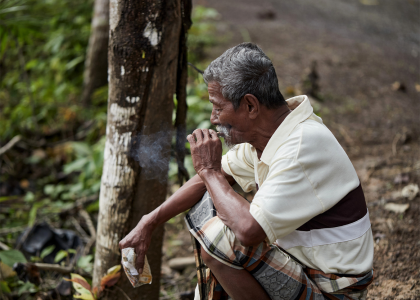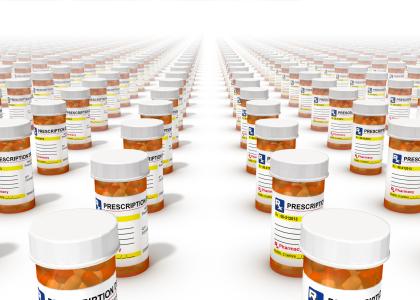Challenges Facing Rural Health in Pennsylvania and the United States
Challenges Facing Rural Health in Pennsylvania and the United States
In our inaugural conversation, Dennis Scanlon speaks with Lisa Davis, Director of the Pennsylvania Office of Rural Health (PORH), to try and understand the challenges stakeholders and the population at large are facing in the rural health care arena. Dr. Scanlon’s goal is to find out what is being done to address the problems, and ultimately, how researchers might design collaborative research efforts to try to assist those working on rural health care issues.
Dr. Davis explains those issues unique to rural health areas as opposed to urban and suburban settings, and why it is important to make the distinction (e.g., about 3.5 million Pennsylvania residents and 20% of the U.S. population live in areas designated as rural), offers resources, and describes the role of the PORH.
Interview Highlights
On why we separate the topic of rural health from city health, urban health, or suburban health…
“The issue of rural health is really important when you consider not only Pennsylvania, but when you talk about the country as a whole. Here in Pennsylvania, we are one of the most rural states in the nation. We have about 3.5 million residents in areas designated as rural. Across the country, 20% of the population lives in areas that are rural,”
“The State Office of Rural Health Program was the very first program that was then authorized and appropriated by Congress within the Office of Rural Health Policy so that within each State there was one office that was dedicated to working between and among anyone in the state and also nationally that was interested in increasing access to health care services in rural communities and increasing the health status of rural residents. So the State Office of Rural Health Program is charged with several broad mandates to be a source of coordination, technical assistance, and networking between and among anyone working in rural health care delivery, rural health care policy, health education, and training of clinicians. Our office has been at Penn State since 1992 when we first opened our doors.”
On what the PORH does and the issues related to rural health…
“Our job is to know everything there is to know about healthcare issues, needs, trends, projections, and the retrospective review about data, issues, funding, who is doing what, and then makes sure it all gets connected so that our constituents both here in the state and nationally, can really do their job that they need to do.”
“When you talk about what the issues are related to rural health, we boil it down to one main topic with three sub topics, and really it is an issue of access: access to health care providers, payment mechanisms for health care, and transportation services which tend to be a huge barrier in rural communities. Our office is dedicated to working in those three areas. We have expertise in rural health, agricultural safety health…and community and economic development because the HC delivery system in any community especially in a rural community is one of the top three employers, education and government being the other top employers.
On key policy issues at the state levels…
“The Affordable Care Act has certainly been helpful especially in terms of the health insurance marketplace and getting residents enrolled into health insurance plans…for our rural hospitals having a way to stop the uncompensated care or reduce the amount of uncompensated care has been important.”
“There are consolidations and mergers happening all across the country and all across the state. For those small hospitals that are trying to remain independent, it is difficult for them to be able to do that. You talked about parts of the Affordable Care Act, one piece of the ACA that has been really challenging for small rural hospitals is the implementation of electronic health records and meeting meaningful use adoption...I don’t think any hospital would argue that it is not a good idea to have your records electronic, but you have such a small staff within rural hospitals and they are dealing with so many issues…so even just to bring in the electronic health record, bring in e-prescribing, being able to get those systems put in place and the staff trained and keep up has been a challenge.”
On key policy issues at the federal level….
“Every community needs and deserves to have emergency services, they need and deserve to have a place where patients can be treated and either triaged and transferred or released back to home…when you look at these small rural hospitals, they may have a very low inpatient daily census….but they provide outpatient services that are absolutely critical to that community and they also have the emergency department...there is legislation at the Federal level called Save Rural Hospitals Act which looks at being able to establish and license essentially free-standing emergency departments that would…give a hospital the opportunity to provide those services without having the entire infrastructure around it that is so expensive to maintain.”
“Pennsylvania is developing a Health Innovation Plan that they will be proposing to the Centers for Medicare and Medicaid Innovation probably in May of this year (2016). As part of that, they have for the first time…an emphasis on rural health care delivery and rural health payment. The Secretary of Health is very interested in developing a pilot program that will be rolled out in rural Pennsylvania to be looking at a global payment system very much modeled after what has been done in Maryland.”
On how research or analysis helped the PORH or those it serves, and how research can be helpful in the future…
“One of the issues that we face…in looking at any trends or in looking at collecting any information that can be used for grants or for legislation, it is always a retrospective perspective. The data don’t always come when you need them to come and they are not always available when they are needed, and by the time you begin to formulate your question and conduct your research and publish your papers, the data can be 5, 8, 10 years old…It is being able to do the quick turnaround on…where are the data and what questions do we need to ask and how can we essentially get a rapid response to the work we are doing…being able to get that quick response is really helpful and being able to drill down more deeply when we need to. “




